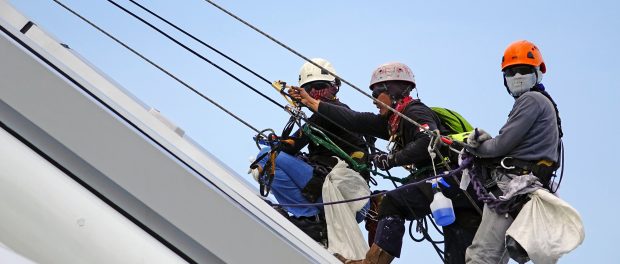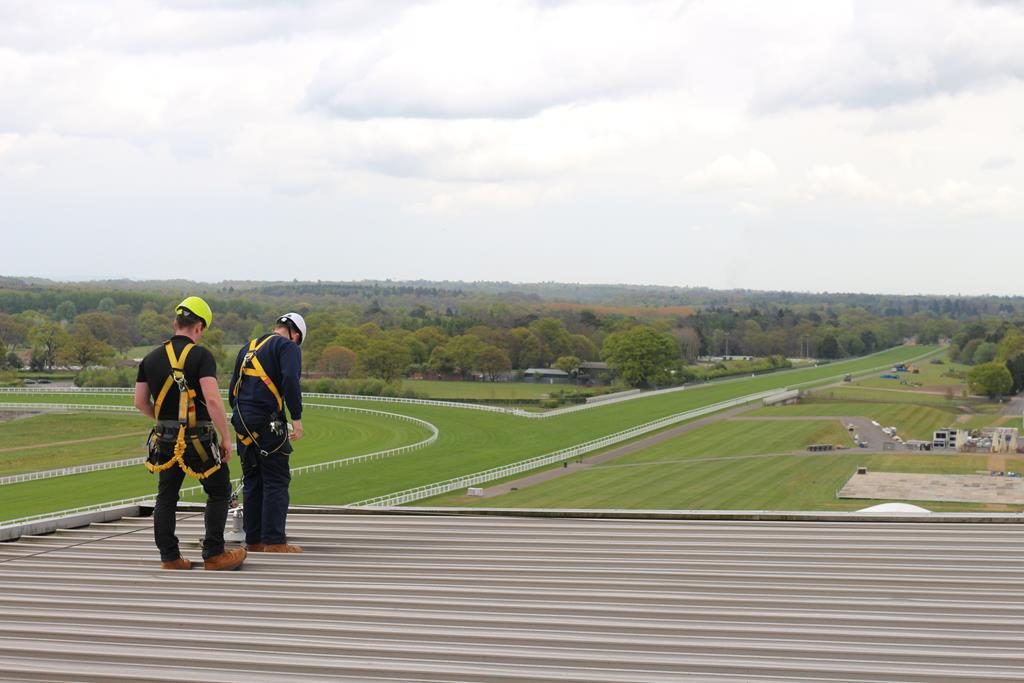Creating a positive Work at Height culture in construction

48% of deaths in construction are due to Working at Height. Ken Diable, Managing Director of Heightsafe Systems, provides his top tips on creating a positive Health and Safety culture to mitigate Work at Height hazards in the workplace, following ten years of maintaining an impeccable Health and Safety record.
Creating, implementing and maintaining a positive Health and Safety culture within both large and small companies can encompass mitigating a wide range of hazards, as well as the mentality of personnel in the workplace.
The responsibility can sit within various roles, normally dependent on the size of the organisation. For larger businesses, it is common best practice to have a dedicated Health and Safety Manager presence per individual site, with smaller businesses’ Directors and Senior Management generally responsible for individual areas such as Health and Safety, Environmental, Quality and Technical. Whether a large or small business, it is important to set guidelines for the safest possible work environment, to ensure personnel go home safely at the end of each working day.
Does your organisation have a poor Health and Safety culture? Some cultural factors specified by the Health and Safety Executive include:
- Widespread and repeat procedural violations
- Failure to comply with policies, control measures and safety management systems
- Management decisions that repeatedly put cost before safety
- Focussing on short-term reactive measures
- Hesitance to act on feedback where offered
The Health and Safety Executive also specifies that key aspects of an effective Health and Safety culture include:
- Management commitment
- Visible management
- Consistent and high-quality communication between all personnel
- Active employee participation
- Open door policy for concerns to be raised
Whilst Health and Safety culture itself is not enforceable, it can be assessed as part of an incident investigation to address outcomes of a poor culture. Where Work at Height is concerned, safety measures should be the number one priority for employers. After ten years of maintaining an impeccable Health and Safety record, our directors and senior managers have created a winning formula for creating a positive culture:
- Practical Mentality
The person/s responsible for Health and Safety within your organisation should adopt a practical ‘hands-on’ approach when implementing guidelines – involving personnel through employee engagement activities such as surveys, whilst being aware of the risks that are present on a day to day basis, as well as wider considerations such as uncontrollable factors. - Employee Involvement
Employee engagement paired with powerful leadership are winning indicators for the basis of a positive Health and Safety culture – minimising risks across your business, as well as increasing well-being for your employees. To create active involvement with your Health and Safety Culture initiative, consider the following:
Leaders
When it comes to creating culture within organisations, whatever the size, it is important that all Directors and Senior Management are seen to be both actively involved, as well as following measures once implemented.
Communication
Hold briefing sessions with department heads and team leaders to ensure key messages are communicated throughout your organisation – establishing that employees are encouraged to address safety hazards in line with procedures.
Involvement
Whether you are planning to create new guidelines, or update current guidelines, ensure that all employees are heard including full time, part time and shift workers. Running a survey across the entirety of your organisation will give you an overview of safety hazards apparent across all areas – making sure that actions are completed in a set timescale to show you are serious about their involvement and are willing to make changes where applicable.
Feedback
Whether individually, companywide or publicly, always provide feedback on suggestions and implementations, showing that you are serious about listening to employee’s views.
Compassion
If an employee is injured or has encountered an incident relating to Health and Safety, ensure you are compassionate in the first instance, rather than discussing corrective actions from the offset.
Reinforce Positive Behaviour
Reward your employees for involvement when creating, implementing and maintaining a positive Health and Safety culture.
Committee Meetings
Hold a minimum of two annual Health and Safety committee meetings – going through guidelines to give employees an opportunity to raise concerns around areas that may be failing, areas that are performing well, as well as presentation of ideas specific to their roles and associated risks.
Results
Following the implementation and analysis of your guidelines, share the positive results including statistics and visual aids, this will aid encouragement of future involvement as well as working in line with specified guidelines.
- Daily Risk Assessments
For those in high risk roles, consider formalising daily risk assessment discussions whilst giving employees the opportunity to raise concerns over daily factors such as weather changes prior to work commencing.
- Regulations
The Work at Height Regulations 2005 are set out to prevent death and injury caused by a fall from height. If you are an employer or are in control of Work at Height, (including Facilities Manager roles and building owners who may contract works externally) these regulations apply to you. Ensure work is properly planned, supervised and carried out by competent personnel – including the use of appropriate equipment.

It is an unforgivable tragedy that construction workers are suffering death and serious injuries as a result of falls from height that could, with proactive safety planning, be avoided.
More advice on safe Working at Height is available on the Heightsafe blog.


